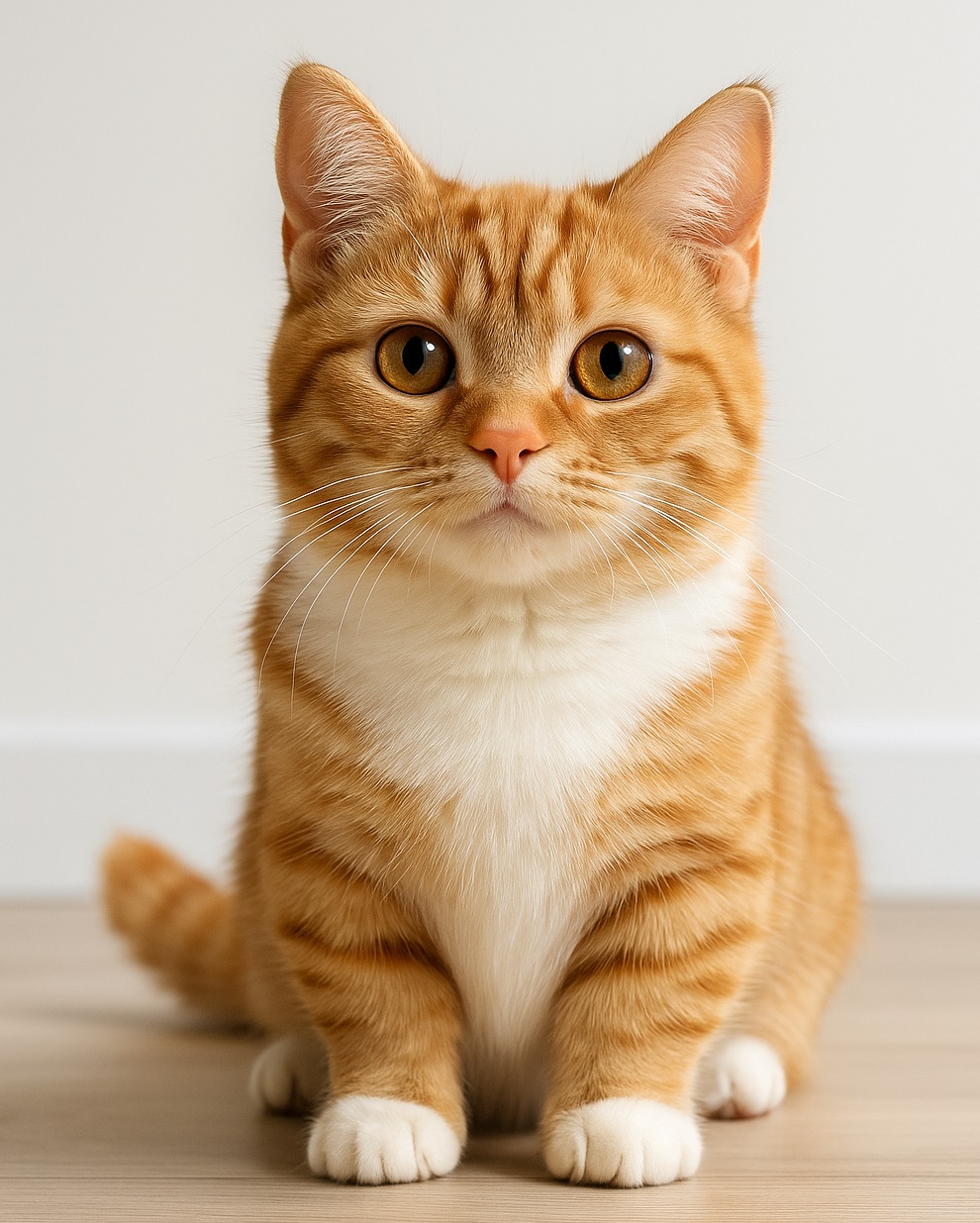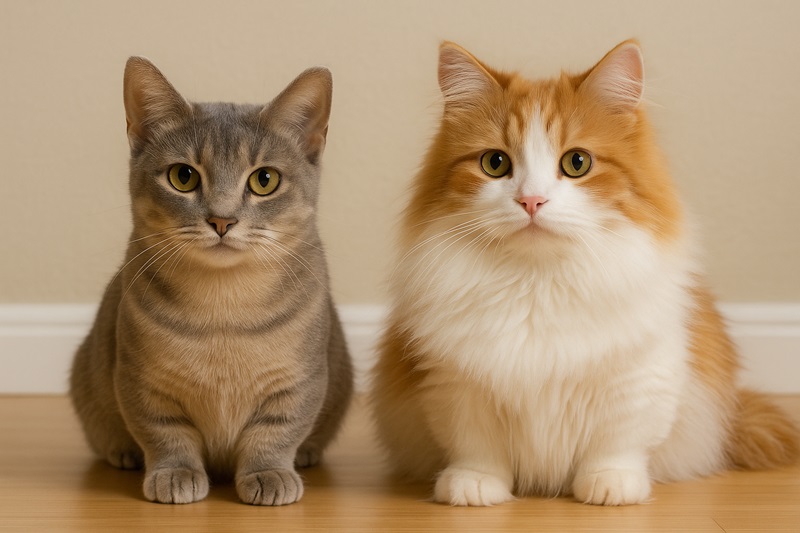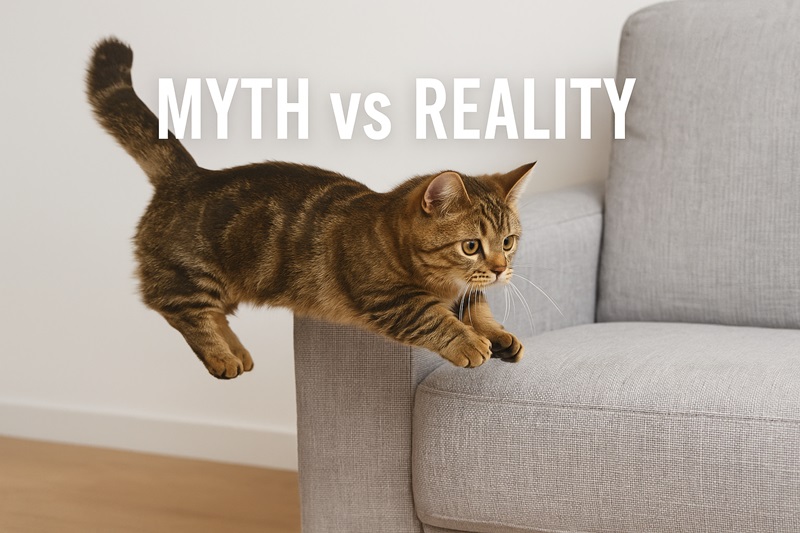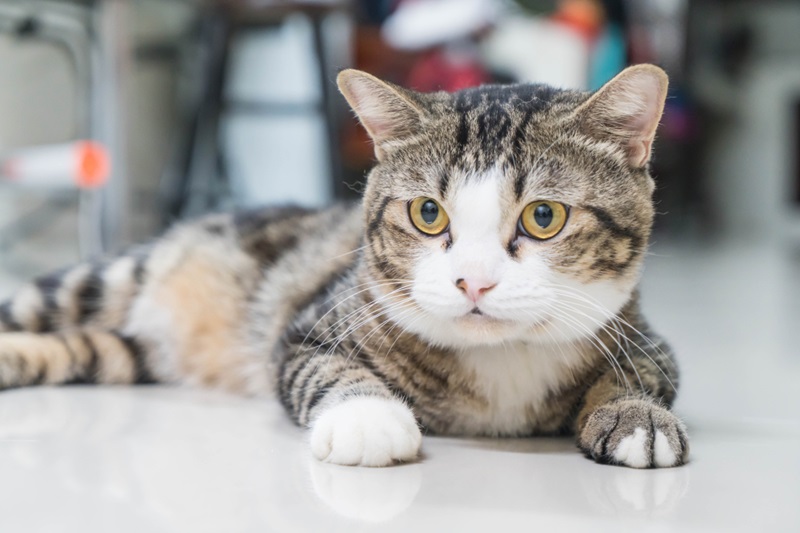A munchkin cat is a playful, affectionate breed known for its short legs and curious personality. They typically live 12–15 years, adapt well to families and apartments, and can be trained with patience. First-time owners should focus on weight management, vet care, and providing safe climbing spaces.
History and Origin of the Munchkin Cat
Despite their modern popularity, munchkin cats aren’t a designer creation. Their signature short legs result from a natural genetic mutation. The first widely recognized munchkin appeared in Louisiana in the early 1980s, when a local schoolteacher took in a short-legged stray. Her kittens shared the same trait, confirming that the look could be passed on.
By the 1990s, the International Cat Association (TICA) officially recognized the breed. Not everyone agreed, though. The Cat Fanciers’ Association (CFA) and several European groups rejected them, raising concerns about welfare and long-term health. Still, munchkin cats captured the hearts of cat lovers worldwide, becoming one of the most distinctive modern breeds.

What Makes the Munchkin Cat Unique?
At a glance, it’s their legs that set them apart. Munchkins are medium-sized cats with sturdy bodies but noticeably shorter limbs. Their coats can be long or short, and they appear in just about every color and pattern imaginable—from sleek solids to fluffy calicos.
What surprises many people is how agile these cats are. While they may not leap to the top of a refrigerator in one bound, they climb creatively, using furniture and determination to reach their goals. The nickname “rug hugger” often follows them, but don’t be fooled—they are far from lazy floor dwellers.

Munchkin Cat Varieties
Munchkins come in both short-haired and long-haired varieties. The short-haired type has a sleek coat that requires only occasional brushing, while the long-haired variety carries more glamour but demands more grooming to prevent tangles.
Not all munchkins display the same degree of leg shortening either. Some have dramatically short legs, while others look only slightly different from a typical domestic cat. This spectrum is the result of how the genetic trait is expressed, meaning that even within the breed, appearances can vary widely.
Personality and Temperament
What munchkin cats lack in height, they make up for in personality. Owners often describe them as outgoing extroverts in the feline world—playful, curious, and unusually people-oriented. They enjoy exploring their environment, chasing toys, and following their humans from room to room.
Their adaptability makes them good companions in a range of households. In families with children, they often become playmates, engaging in interactive games. Around other pets, including dogs, munchkins usually adjust well as long as introductions are handled gradually. For apartment dwellers, their size and activity level make them an excellent fit. They thrive in smaller spaces as long as they have toys, scratching posts, and daily interaction.
Lifespan and Health
On average, munchkin cats live between 12 and 15 years, similar to most domestic cats. While many live full, active lives, their body structure does bring some considerations.
They are not automatically in pain, despite myths to the contrary, but they may face a slightly higher risk of conditions like lordosis (a spinal curvature) or pectus excavatum (chest deformity). Arthritis and joint strain can also appear in older cats, especially if they are overweight. Regular veterinary checkups, joint-friendly climbing spaces, and a healthy diet go a long way in supporting their long-term well-being.
Care and Diet
Feeding a munchkin cat is much like feeding any other feline, but weight management is crucial. Extra pounds can put strain on their shorter legs and spine. Most adult munchkins do well on a balanced diet of high-protein cat food, ideally a mix of wet and dry to support hydration and dental health.
The average adult requires around 250–350 calories per day, though activity level and age play a role. Kittens need more frequent meals, while seniors may require fewer calories but a higher focus on protein. Raised feeders or shallow bowls can make mealtime more comfortable. As with all cats, fresh water should always be available.
Training and Socialization
Munchkins are intelligent and can be trained with patience. Litter box training is usually straightforward, and many owners find their cats can learn simple tricks like fetching toys or walking with a harness. The key is positive reinforcement—short sessions with treats and play keep them motivated.
Early socialization helps munchkins grow into confident adults. Exposure to household sounds, visitors, and other pets during kittenhood makes them more adaptable later in life.
Munchkin Cat vs. Normal Cat
| Feature | Munchkin Cat | Normal Cat |
| Appearance | Short legs, medium body, wide coat variations | Average leg length, wide variety of body sizes and coats |
| Mobility | Agile climbers but lower jumping ability | Strong jumpers, can reach high spots with ease |
| Personality | Playful, curious, often kitten-like into adulthood | Varies by breed; can be independent, affectionate, or reserved |
| Health Risks | Higher risk of spinal/joint issues if overweight | Health risks vary by breed; fewer skeletal concerns overall |
| Care Needs | Same as other cats, but with attention to weight and joint health | Standard feline care: diet, grooming, vet visits |
| Lifespan | 12–15 years | 12–16 years, depending on breed and care |
| Ethical Concerns | Breeding is controversial; banned in some countries like the Netherlands | No ethical controversy in breeding standard cats |
Legality and Ethics
While munchkin cats are legal to own in most parts of the United States, their breeding remains controversial. Some animal welfare groups argue that deliberately perpetuating a genetic mutation associated with skeletal abnormalities prioritizes appearance over welfare.
Different countries have taken different stances. The Netherlands has banned their breeding under animal welfare laws, and other European nations maintain restrictions. In the U.S., however, they remain popular, and the International Cat Association recognizes them as an official breed, while the Cat Fanciers’ Association does not.
For prospective owners, the question often becomes one of ethics. Many people find that adopting a munchkin cat from a rescue is the most responsible choice, as it offers a loving home without supporting questionable breeding practices.
Price and Value: Is It Worth Getting a Munchkin Cat?
The cost of a munchkin cat varies widely. In the U.S., prices from breeders typically range between $500 and $2,000, depending on coat type and pedigree. Adoption is usually far less expensive, with fees often under $400.
So, is it worth it? For many owners, the answer lies in balance. Munchkins can be affectionate, playful companions who adapt well to different living situations. But the ethical debate and potential health concerns deserve consideration. For those who value both companionship and compassion, adoption is often the best route.

Myths and Misconceptions
Munchkin cats attract plenty of rumors. Some people believe they cannot jump at all, when in reality they can leap onto couches and low furniture with ease. Others assume they are constantly unhealthy, but many munchkins live long, active lives with proper care. The idea that they are a recent “designer” creation is also a myth—their defining trait is a natural mutation, not a human invention.
FAQs
Are munchkin cats good for apartments?
Yes. Their moderate size and activity level make them well-suited to apartment living, as long as they have toys and interaction.
How much does a munchkin cat cost in the U.S.?
Typically $500–$2,000 from breeders, or under $400 from shelters and rescues.
Do munchkin cats need special care?
Not dramatically, but keeping them at a healthy weight and offering accessible climbing furniture helps protect their joints.
Are munchkin cats recognized by cat associations?
They are recognized by TICA, but not by CFA, largely due to welfare concerns.
Conclusion
Munchkin cats are more than a quirky body type—they’re lively, affectionate companions who can thrive in families, apartments, and multi-pet homes. They bring curiosity and playfulness into daily life, often holding onto a kitten-like spirit well into adulthood.
At the same time, responsible ownership means weighing their charm against the ethical and health concerns that follow the breed. With thoughtful care and, ideally, through adoption, munchkin cats can live happy, healthy lives while bringing joy to the people who love them.




